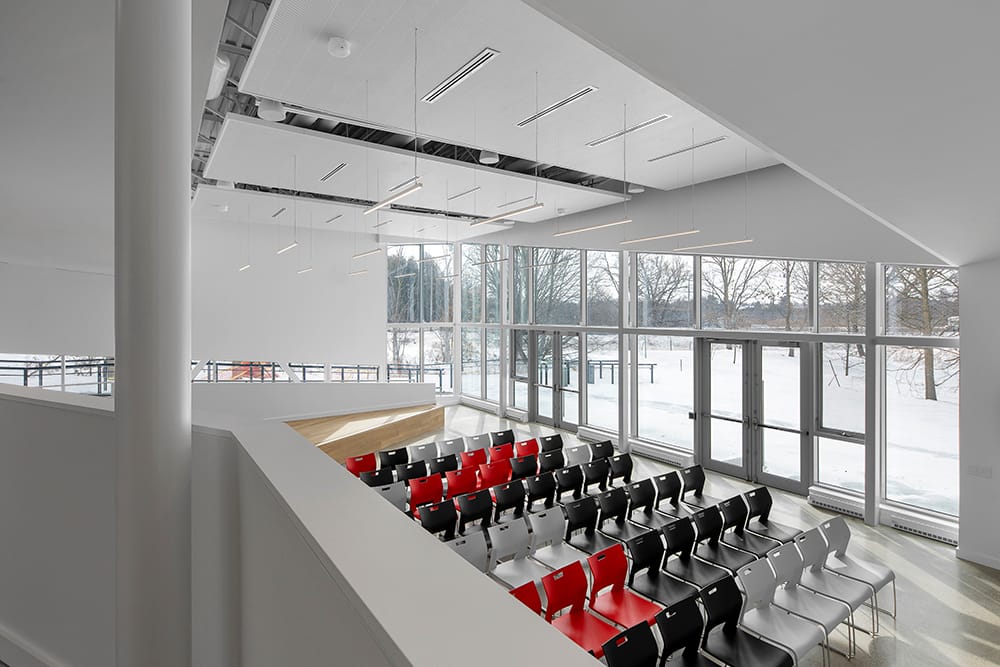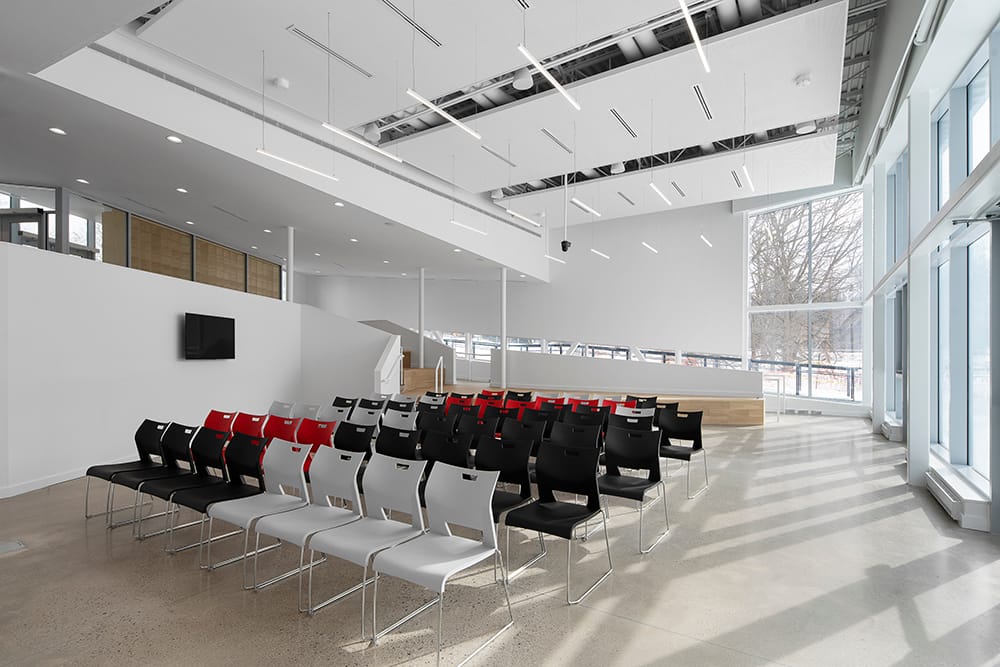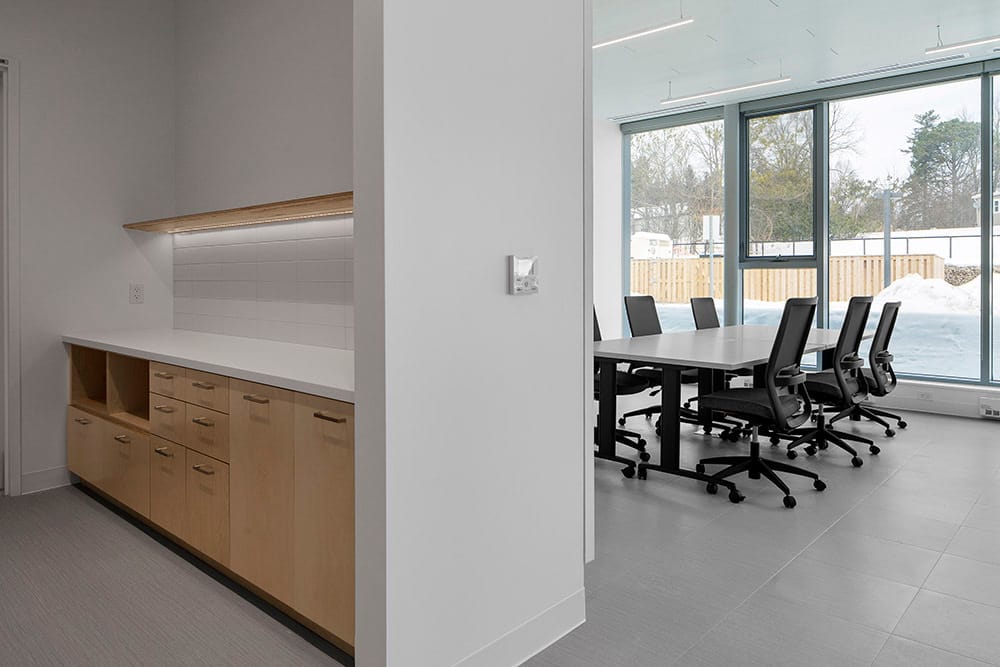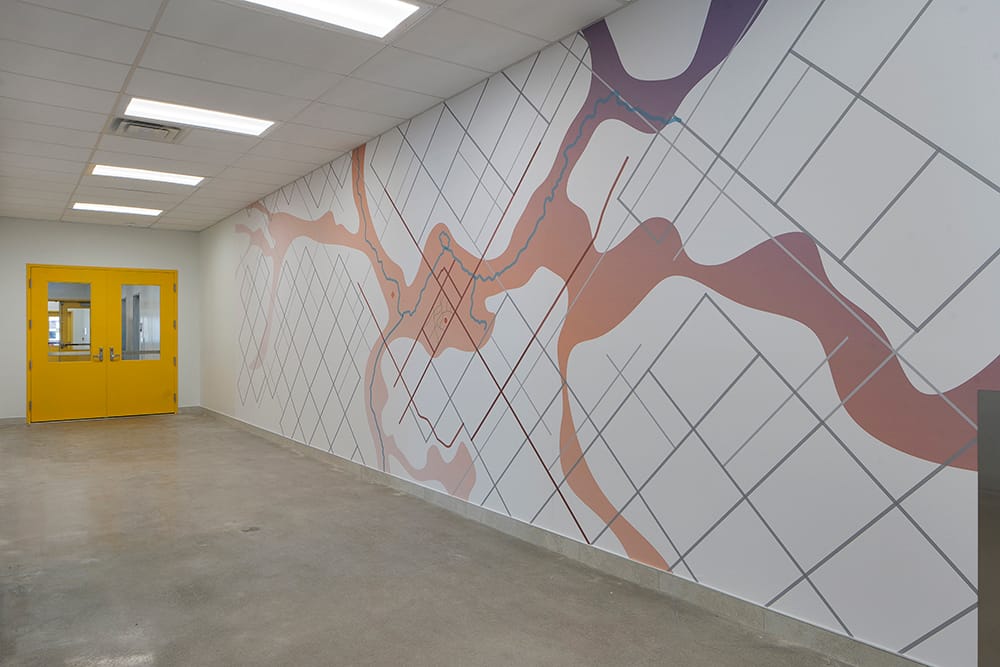
Located within the botanical garden of the Guelph Arboretum, the newly completed Honey Bee Research Centre (HBRC) enhances connections to both the neighbouring University of Guelph campus and the Arboretum’s natural landscape and existing integrated trail system.
The $16-million facility serves as an upgraded hub for pollinator research, teaching, and public outreach, replacing the previous 1960s-era bungalow that had long housed the centre. Spanning 15,000 square feet, the new centre features indoor and outdoor education spaces, classroom and event areas, a laboratory, bee breeding facilities, and pollinator gardens. It is situated near Townsend House, the HBRC’s longtime home on Stone Road.

Project by:
Moriyama Teshima Architects
Collaborative Structures Ltd.
Project Type:
Academic
Location:
Guelph, ON
Photography:
Wilson Costa, DesignSQ
The new facility supports expanded engagement with apiarists, community members interested in pollinators and honeybees, and young people committed to environmental sustainability. Designed to accommodate growing interest, the centre now has the capacity to welcome up to five times the number of visitors previously hosted, including school groups, hobbyists, and commercial beekeepers.
Research at the HBRC focuses on addressing challenges faced by honeybee populations. Ongoing projects include breeding bees resistant to varroa mites, studying plant-based miticides, and investigating nutritional supplements to improve bee health. The improved laboratory space enhances the centre’s ability to conduct research, incubate bee colonies, and support faculty, students, and collaborators in their work.
With expanded facilities, the HBRC can now conduct teaching and demonstrations in dedicated apiaries rather than a single shared space, leading to greater efficiency and improved hive health. The enhanced education spaces allow for year-round programming, extending beyond the previous seasonal offerings.

The HBRC manages the largest number of research honeybee colonies in North America. Staff maintain approximately 100 hives at the university’s main apiary, along with an additional 200 hives at the Arkell Research Station and 12 privately run farms nearby. The new location is adjacent to a planned “bee tree forest” featuring pollinator-friendly species such as basswood, maples, and willows. This space, along with surrounding gardens, serves as an outdoor education area for homeowners and community members looking to create pollinator-friendly habitats.
The HBRC building was designed by Moriyama Teshima Architects, who also designed the nearby OAC Centennial Arboretum Centre. The project received significant support from University of Guelph alumni, including a major donation from Lydia Luckevich, a 1979 U of G chemistry alumna. As of completion, the university successfully raised over 80 percent of the project’s funding goal.











For photography / licensing inquiries contact [email protected]
Have a project to feature? Reach out to Fokal Point at [email protected]

